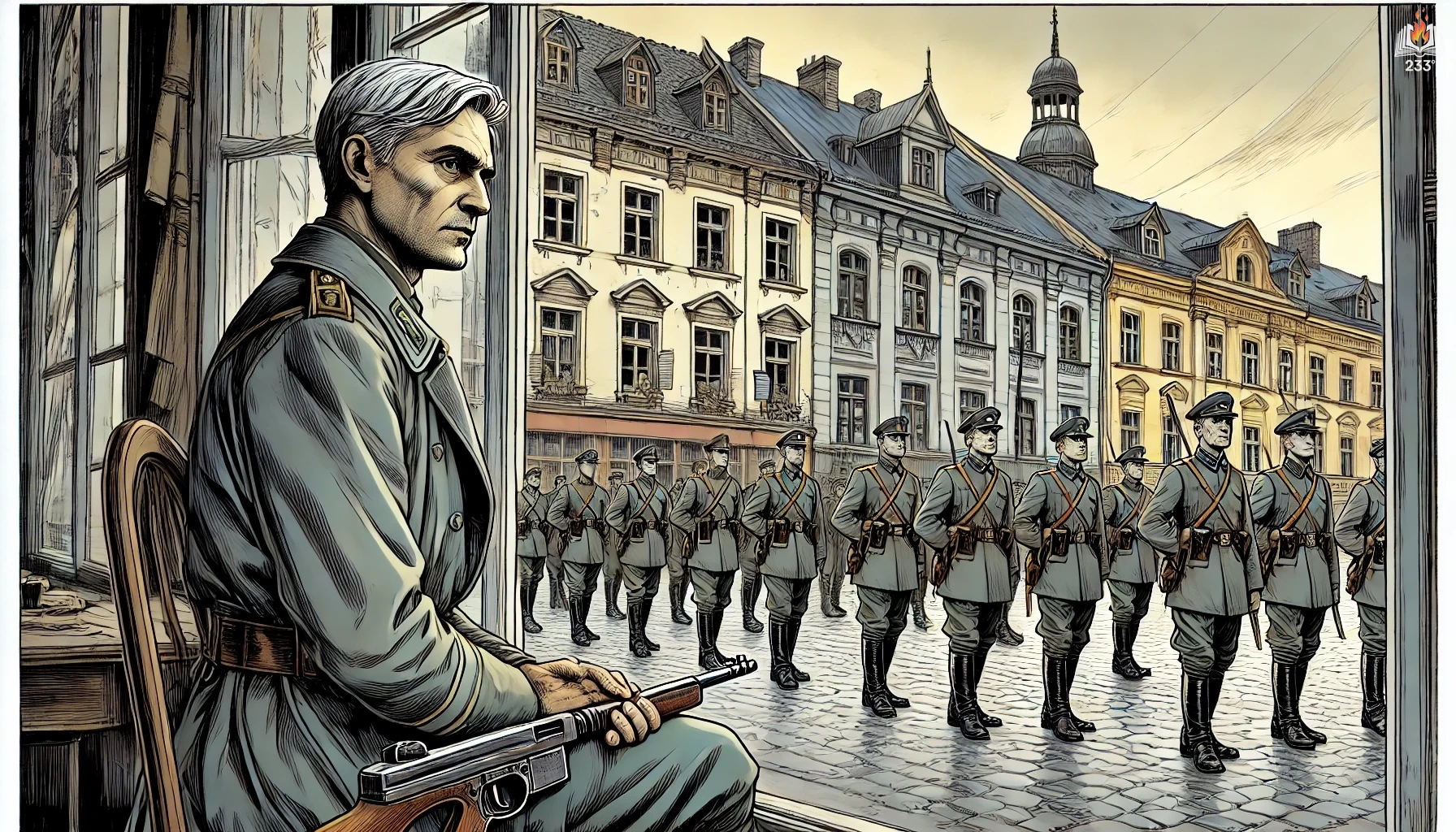The Outsiders, written by S. E. Hinton and published in 1967, is a landmark young adult novel that explores themes of class conflict, loyalty, and the search for identity through the lives of teenage boys in a divided town. It has become a classic, especially among young readers, and remains one of the most beloved works in American Young Adult literature.
Plot Summary
Ponyboy Curtis steps out of a dark movie theater into the bright sunlight, his mind swirling with thoughts of Paul Newman and the long walk home. With his light-brown hair and greenish-gray eyes, Ponyboy knows he’s different – a Greaser, marked by his leather jacket, long hair, and a life edged by poverty. He lives with his two older brothers, Darry, who shoulders the burden of raising the family after their parents’ death, and Sodapop, the golden boy with a carefree grin. The streets are ruled by invisible lines, drawn between the working-class Greasers and the privileged Socs, the West Side kids with money, cars, and polished lives.
Ponyboy’s walk home is cut short by a red Corvair pulling up beside him. Five Socs jump out, and the quiet of the street turns savage. Surrounded and pinned to the ground, Ponyboy is saved only when Darry, Sodapop, and the rest of the gang arrive, sending the Socs scrambling. Among the group are Steve, Two-Bit, Dally, and Johnny – each hardened or hurt in his own way, all bound by loyalty. Johnny, skittish and scarred from a previous brutal attack, stands out as the gang’s most fragile member, the one they all look out for.
When the boys head to the drive-in the next evening, they meet Cherry and Marcia, two Soc girls who’ve walked away from their drunk boyfriends. Dally flirts with sharp-edged charm, but it’s Ponyboy and Johnny who connect with the girls, finding in Cherry a surprising bridge between worlds. Cherry, with her fiery red hair and thoughtful gaze, understands more than expected – she knows the Socs’ wealth doesn’t shield them from pain. As they talk about sunsets and struggles, Ponyboy begins to glimpse the first cracks in the wall that divides them.
But the world outside doesn’t wait for quiet understandings. Later, the boys walk the girls home, only to be confronted by the Socs, including Bob, Cherry’s boyfriend, with his rings gleaming under the streetlights. Johnny stiffens at the sight – it was Bob and his friends who once beat him senseless, leaving scars deeper than his cuts. Tension crackles in the air, but Cherry defuses it, choosing to leave with Bob to stop a fight. As the Mustang drives away, the uneasy peace leaves behind a heavy silence.
That night, after a fight with Darry, Ponyboy runs off to the vacant lot with Johnny. They lie on their backs, gazing at the stars, until sleep claims them. When Ponyboy wakes, guilt drives him home, but the damage is done – Darry’s fury explodes, and Ponyboy runs again. Johnny follows, and the two wander a dark park, only to be cornered by Bob and a gang of Socs, drunk and looking for trouble. Shouts turn to violence, and in the chaos, Bob shoves Ponyboy’s head underwater in the fountain. Panicked and desperate, Johnny draws his switchblade. When the struggle stops, Bob lies dead in the grass.
With nowhere to turn, Johnny and Ponyboy find Dally, who hustles them onto a train and sends them to an abandoned church in Windrixville. There, the boys hide out, cutting and bleaching their hair, reading Gone with the Wind, and watching the sun rise over the horizon. For the first time, Ponyboy and Johnny share a stillness away from the constant noise of home. Days pass, until Dally arrives with news – Cherry is acting as a spy for the Greasers, feeling the weight of Bob’s death, and the tensions between the gangs are boiling toward a full-on rumble.
Before they can return, a fire breaks out at the church. Children trapped inside scream for help, and without hesitation, Ponyboy and Johnny rush into the flames. They save the children, but Johnny is caught under falling beams, his small frame crushed and burned. Dally, too, is hurt pulling Johnny out. As sirens wail, the boys are swept back to town, hailed as heroes, even as they face the shadows of their choices.
At the hospital, Johnny’s injuries are grave. The gang, battered but united, prepares for the rumble with the Socs. Ponyboy, thin and worn, pushes his body to the edge. The fight explodes in the lot under the night sky – fists fly, bodies fall, and the Greasers, against the odds, win. Victory, though, is hollow. At the hospital, Johnny, frail and fading, whispers his final words, urging Ponyboy to stay gold, to hold on to the innocence and beauty still left in the world. His death leaves a wound no fists or wins can heal.
Dally, shattered by Johnny’s death, spirals out. Robbing a store, waving an unloaded gun, he rushes toward his end with reckless abandon. The police bullets find him in the street, and the gang watches as the hardest among them falls, consumed by grief he cannot outrun. Ponyboy, numb and broken, drifts through the days that follow, his body collapsing under strain, his mind haunted by the losses.
Slowly, through the haze of pain, Ponyboy reaches toward understanding. He picks up Johnny’s letter, left behind in a battered copy of Gone with the Wind, and reads the plea to hold onto the good, to remember that the world still holds sunsets and soft moments, even for a Greaser. Ponyboy knows he must tell their story, must remind himself and others that beneath the leather jackets and bitter rivalries, they were just boys wanting to be seen, to be understood, to matter.
As he sits at his desk, paper in front of him, Ponyboy begins to write. Not for grades or teachers, but for the friends lost and the hope that something in their struggle will not be forgotten. He writes of pain, of brotherhood, of that fleeting, golden time when the world still held wonder. And as the words flow, so too does the first glimmer of healing.
Main Characters
Ponyboy Curtis: The 14-year-old narrator and protagonist, Ponyboy is thoughtful, sensitive, and intelligent, with a love for books and movies. He struggles to reconcile his identity as a Greaser with his desire for a life beyond violence and poverty, and his coming-of-age journey shapes the heart of the novel.
Sodapop Curtis: Ponyboy’s 16-year-old brother, Sodapop is charming, carefree, and deeply loyal. His good looks and upbeat nature mask the burdens he carries as he works to keep the family together after their parents’ death.
Darrel (Darry) Curtis: The eldest Curtis brother at 20, Darry has sacrificed his own dreams to become the family’s caretaker. Stern and responsible, Darry often clashes with Ponyboy, but his actions are driven by love and a sense of duty.
Johnny Cade: A fragile and quiet 16-year-old, Johnny is the gang’s “pet,” shaped by years of neglect and abuse. His bond with Ponyboy becomes crucial as both face life-changing events that push them to question their place in the world.
Dallas (Dally) Winston: A hardened, street-smart Greaser with a criminal record, Dally is fiercely protective of Johnny. Beneath his tough exterior lies a deep vulnerability, and his tragic arc reflects the darker side of their world.
Two-Bit Mathews: The wisecracking, fun-loving member of the gang, Two-Bit provides comic relief but also stands as a loyal friend. He values laughter and camaraderie, offering balance within the group.
Steve Randle: Sodapop’s best friend, Steve is tough and skilled with cars, though he often dismisses Ponyboy as a tagalong. His brash exterior hides loyalty to his friends.
Cherry Valance: A Soc girl who crosses social lines, Cherry befriends Ponyboy and reveals the complexities of the Socs. Her perspective helps challenge Ponyboy’s assumptions about class divisions.
Theme
Class Conflict: At the novel’s core is the tension between the Greasers and the Socs, two teenage groups divided by socioeconomic status. Hinton explores how poverty, privilege, and social labeling shape identity and relationships, showing that suffering exists on both sides.
Identity and Coming of Age: Ponyboy’s journey from innocence to maturity is central to the story. Through hardship and reflection, he learns to understand himself, his family, and the people around him beyond the surface of gang rivalry.
Loyalty and Brotherhood: The fierce loyalty among the Greasers serves as both their shield and their vulnerability. The relationships between Ponyboy, his brothers, and his friends emphasize themes of chosen family, sacrifice, and solidarity.
Violence and Its Consequences: Fights, accidents, and deaths punctuate the narrative, forcing characters to confront mortality and the weight of their choices. Hinton doesn’t glamorize violence but portrays its ripple effects with honesty.
The Power of Empathy: Moments of connection across social lines—especially through Ponyboy and Cherry—highlight the importance of empathy. Seeing past stereotypes, the characters discover shared humanity, reshaping their understanding of “us” and “them.”
Writing Style and Tone
S. E. Hinton’s writing style is raw, direct, and emotionally resonant. She employs a first-person narrative through Ponyboy’s voice, which lends the novel an intimate, confessional quality. The language is accessible yet evocative, capturing both the roughness of street life and the quiet reflections of a sensitive teenager. Hinton’s use of authentic dialogue grounds the story in realism, while her occasional lyrical descriptions—like sunsets or moments of stillness—offer poignant contrasts to the grit of the characters’ lives.
The tone of The Outsiders is a masterful blend of melancholy, defiance, tenderness, and hard-earned wisdom. While the novel pulses with the energy and rebellion of youth, it also carries an undercurrent of sadness, shaped by loss and longing. Hinton balances moments of humor and camaraderie with a profound exploration of pain, allowing the reader to feel the characters’ joys and heartaches without sentimentality. This tone—sincere yet unflinching—has helped the novel endure across generations.
We hope this summary has sparked your interest and would appreciate you following Celsius 233 on social media:
There’s a treasure trove of other fascinating book summaries waiting for you. Check out our collection of stories that inspire, thrill, and provoke thought, just like this one by checking out the Book Shelf or the Library
Remember, while our summaries capture the essence, they can never replace the full experience of reading the book. If this summary intrigued you, consider diving into the complete story – buy the book and immerse yourself in the author’s original work.
If you want to request a book summary, click here.
When Saurabh is not working/watching football/reading books/traveling, you can reach him via Twitter/X, LinkedIn, or Threads
Restart reading!








